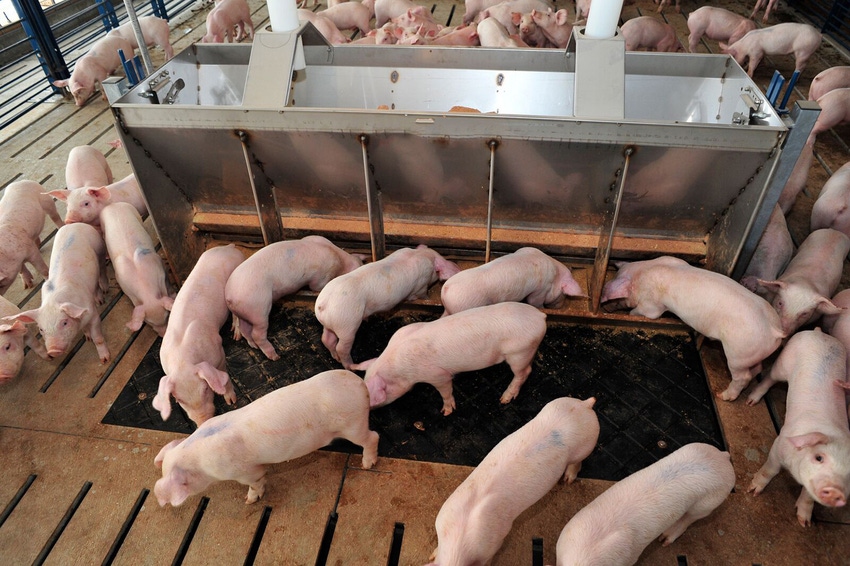Choosing the right MCFA for your operation
Activated medium-chain fatty acids support feed biosecurity as they can weaken some viruses lurking in feed before they even enter the pigs' system.
June 11, 2020

Pigs are under continuous risk of disease challenges that could come from up the road or across an ocean. How do you make sure you're addressing every route pathogens could take to get into your barn?
According to the monogastric product manager for PMI, a Land O'Lakes Inc. business, a good place to start is with a tool that does more than one job such as medium-chain fatty acids. Multifaceted, MCFAs work in more than one way to protect pigs from bacteria and viruses and support pig performance.
"MCFAs serve multiple roles when incorporated into swine rations," says Stacie Crowder. "Activated MCFAs can work in feed to weaken pathogens before they reach the pig. They also work inside the pig to support immune activity, gut health and pig performance."
With this much flexibility, how can producers choose the right MCFA for your operation? Crowder offers these four things to consider.
1. Determine your goals
"Are you adding MCFAs to diets because your barn has a history of scours?" asks Crowder. "Or, is your goal to minimize pathogen transition through feed? You can pick the best MCFA for the job if you first choose what you want to do."
MCFAs can deliver many benefits, including:
An easily accessible energy source to support the integrity of the intestinal lining. Optimal gut function keeps pigs healthy and performing during diet transitions or other periods of stress.
A healthy balance of microbes in the gut. MCFAs inhibit pathogenic bacteria to support an optimal gut environment for beneficial bacteria.
A biosecurity tool in the swine feed supply chain. Feeding MCFAs can minimize disease challenges and help keep pigs on track with growth and performance.
2. Activated MCFAs stand out from the crowd
MCFAs can inhibit certain types of bacteria or viruses, which makes them valuable as a feed additive. But, MCFAs are not all the same. They can be found in different forms and lengths, and each works differently.
MCFAs are fatty acids with six, eight, 10 or 12 carbon atoms. In their activated form, MCFAs are not bound to other molecules and can work immediately to protect pigs from pathogens.
Activated MCFAs are readily available to minimize or weaken pathogens as soon as they come into contact.
"The structure of activated MCFAs allows them to penetrate membranes of pathogens or prevent them from replicating when they come in contact during digestion," says Crowder. "This helps protect pigs from gut challenges or inflammation since the pathogen can't irritate the digestive tract."
Activated MCFAs can also begin working in feed before consumption. This benefit allows activated MCFAs to support feed biosecurity because they can weaken some viruses lurking in feed at the mill, in the truck or the feeder before they even enter the pigs' system.
3. Why MCFA form matters
Non-activated MCFAs come in several forms and require dietary energy to be activated. Triglycerides and salts are common sources of non-activated MCFAs in swine diets.
The triglyceride form is commonly found in fat sources such as oils. In this form, the MCFAs are only available to interact with pathogens during digestion. It's also necessary to feed MCFAs in this form at high inclusion rates so enough triglycerides are activated in the intestinal tract.
The salt form is made of fatty acids bound to a calcium or sodium molecule. This form allows MCFAs to interact with bacteria sooner than triglycerides would. The salt form also allows for feeding at lower rates than triglycerides, but it still comes with challenges.
MCFAs in the salt form can taste soapy, which could negatively impact feed intake.
4. The strength of a strategic blend
Different pathogens are susceptible to different MCFAs. Feeding an MCFA supplement with a strategic blend of activated MCFAs (with six, eight, 10 or 12 carbon atoms) provides a broad spectrum of support, even when the challenge is unknown.
"Weaned pigs don't arrive with a list of pathogens they've been exposed to or how to treat for those challenges," says Crowder. "Providing strategic combinations of activated MCFAs is a proactive way to give pigs broad-spectrum support, even when you don't know the exact nature of the challenge."
Source: PMI, which is solely responsible for the information provided, and wholly owns the information. Informa Business Media and all its subsidiaries are not responsible for any of the content contained in this information asset.
About the Author(s)
You May Also Like



